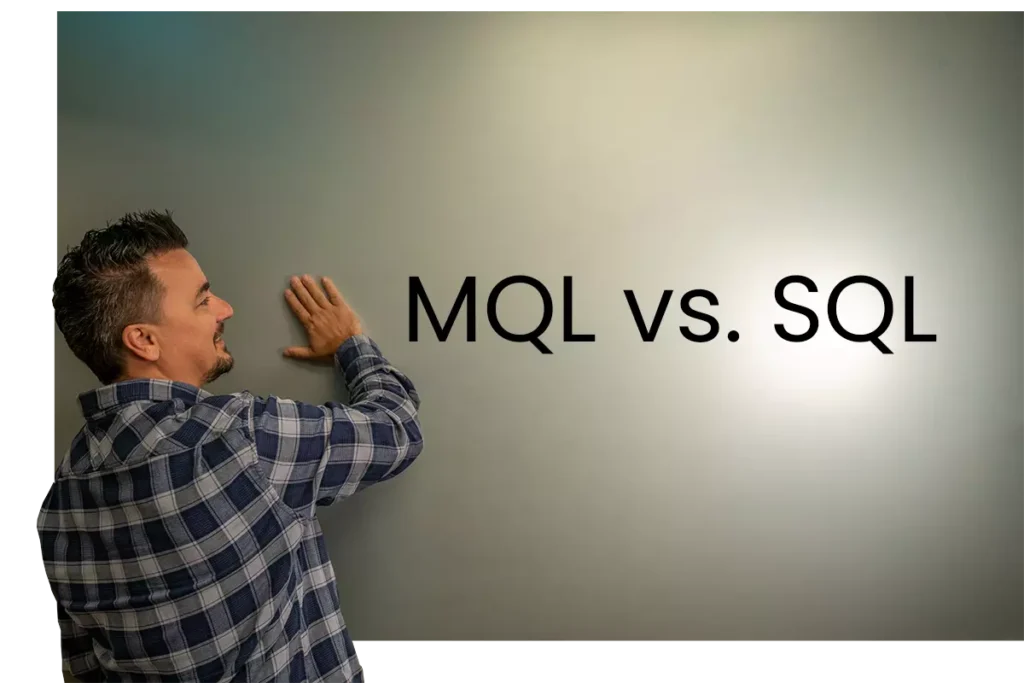Marketers are always talking about “leads”, how to generate them, and what to do with them. MQL and SQL are abbreviations that deal with leads. Marketing Qualified Leads (MQL) and Sales Qualified Leads (SQL) are terms used to describe a lead as it goes through the sales process.
The reason why they are separate is that they describe completely different points of the process. The reason why we differentiate between them is that their needs are not the same. One is beginning the process of engagement with a company, and the other is nearing the end when a sale is imminent.
What Is an MQL?
The letters stand for Marketing Qualified Lead. This is any lead that has had contact with the company, and keeping track of MQLs can lead to more contact. MQLs are often put on mailing lists, or engaged with by the marketing team in any number of ways.
The goal of engaging them is to draw them closer to the company and begin their journey down the sales pipe. MQLs by definition have not decided whether or not to make a purchase, so they need engagement and encouragement. There are other reasons why an MQL may not be ready to move to a sale as well.
Some MQLs are long-term buyers, researching and trying to understand your products. Others have a desire to make the purchase but may lack the budget they need. All of these factors can make an MQL instead of an SQL.
What Is an SQL?
The letters stand for Sale Qualified Lead. This is a lead that has made contact with the company but has also moved down the sales pipe. To be an SQL, a lead has to be ready to make a purchase or that purchase is imminent.
An SQL is handed off from the marketing department to the sales department. This pass-off is important, as it signifies when a sale is expected and imminent. Making the transition on time is one of the reasons why recognizing the difference between MQL and SQL is so important.
The key factor in an SQL is an intent to make a purchase. This readiness to complete the buy is what transitions them from the marketing to the sales team. Their own readiness moves them down the sales pipe, either on their own or with the help of your marketing team.
The Roles of MQL and SQL
It is important to have defined roles between MQLs and SQLs. Defining these roles is what helps to streamline the user experience and efficiency of making the final sale. The interplay between the marketing and sales teams will also strengthen the way a company does business.

MQL vs. SQL
When it comes down to MQL vs. SQL, it is easy to see the differences. A first-time visitor to the site could be an MQL, at the very top of the funnel and ripe for conversion. They are drawn in by content and can be communicated with, and prepared for the rest of their sales journey.
At the bottom of the sales funnel sits the SQL, ready and intent to make a purchase. You still don’t want to drop them or leave them unattended. You can still lose a sale by not taking care of an SQL. This is why content at the top and bottom of the funnel is so important.
The biggest difference between them is the intent to make a purchase. That single determining factor is what moves an MQL down the funnel and turns them into an SQL. Depending on the industry or business, an MQL and an SQL can take different forms.
First-Time Visitor vs. Return Customer
The buyer’s journey begins when a first-time visitor begins to consume content about services or goods. They may read articles you have available like, “What makes a great HVAC system” or be there to gather information about what is offered. This is a great example of an MQL.
A return visitor, however, doesn’t need to read anymore. They are ready to go. They move onto the sales section of the webpage, they are looking at options and are comparing models and prices. These individuals may be getting the offers at the bottom of the funnel and they are SQLs.
Another important thing to remember is that MQLs and SQLs are qualified leads. They are people who are engaged with the content and the business. An MQL is going to become an SQL as long as they are given the information and experience they need to convert to an SQL.
Scoring Leads
One of the reasons why scoring leads is so important is to differentiate between MQL and SQL. A lead score is a point total assigned to a lead that can tell you how interested or intent they are in making a purchase. The higher the total, the closer to becoming an SQL or an actual sale they are.
The only way to score leads is to have data on them. What they’ve been looking at, how long they’ve spent browsing, and other key factors. Data like this can then be used to give a lead a score. Often this is done by dedicated programs which automatically score leads.
Key Behaviors
Data can also give insights into the behavior of a lead. Leads that engage with content, offers, and features are more likely to transition into a sale. The higher their engagement, the more likely to be an SQL they are. Here are some behaviors to watch out for when organizing your leads:
- Filling out forms, getting on a mailing list
- Downloading content
- Social media engagement
- Finding your site via external links
Persona and Demographics
Every company has an ideal customer. One that fits and checks the most boxes. Categorizing leads by demographic based on this persona is a great way to determine whether or not they will transition into a sale. Who looks for your products and services, and who do they appeal to?
If you find that a lead fits this demographic from the start, you know that there’s a better chance of converting them. This can help direct resources to the most likely candidates who are interested in your business. Someone who fits the criteria may automatically become an SQL, while someone who doesn’t could become an MQL.
This is to say that they don’t have to fit a perfect lead persona to become a sale, it just makes it more likely. For instance, if you know that the majority of your customers are small transport companies, leads that come from small transport companies can be prioritized into an SQL from the start.
Making a Purchase
It all comes down to the chance of making a sale, or in this case, the chance a lead will make a purchase. This is the end goal, and the likelihood of this step is what makes the key difference between an MQL and an SQL obvious. There are a lot of variables that go into the possibility of a sale.
This is why organizing and understanding your leads is so important. Making the right steps and the right moment can turn almost any MQL into a SQL. Finding the SQLs quickly also helps make their journey easier and more comfortable, so they will have a better chance of returning.
